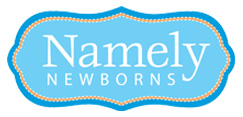Personalized Baby Quilts
These handcrafted keepsakes can be used in the crib to cover baby or as a wall hanging like a piece of art to decorate the nursery. Available in traditional designs like ABC and rocking horses and modern designs like hearts and airplanes; lovingly quilted and stitched together, these bright cotton squares are transformed into a kaleidoscope of colors and designs by dedicated women who sew in their homes the old -fashioned way so that your child can enjoy the beauty of a hand made gift. Quilts can be completely customized with your colors, designs, child's name and birthdate to complement any nursery. If you have an idea or dream, it can be created by one of our quilters even using your own fabrics to make this a one of a kind treasure.
Baby quilts make incredible presents for baby showers, newborn gifts and baby birthday gifts. Years ago family and friends would gather at quilting bees spending many hours to create a birth quilt for the newborn. Quilting was a respected tradition and a way to connect family and friends in a creative activity for the good of the community. In our fast paced modern world, quilting has almost become a lost art. There is something fun and festive about a handcrafted baby gift, especially when given by a grandparent or family friend to someone as important as a newborn. Even though most of us don't have the time or skill to quilt or sew, you can still be part of this honored tradition and send your love through one of our exquisite custom handcrafted works of art. You will be remembered for your thoughtfulness and your gift will be a treasured keepsake and sure to become a family heirloom.
The history of quilting in America is a long one. The word comes from the Latin "culcit" which means a stuffed sack. The word can be used as a verb which means stitching together through layers of fabric or as a noun to describe a three layered bed covering.
We take for granted modern heating, but generations ago only rooms that had a fireplace or the kitchen which had a stove were warm. Even in wealthy homes families needed heavy bed covers to make their beds comfortable enough to guarantee a good night's sleep. Quilts were the practical solution because several layers of fabric could be stitched together to keep out the cold.
Life was hard for early settlers who had to weave their own fabrics. In today's world, we replace damaged blankets and even ones that are simply too old or out of style. Years ago, people could not afford to discard blankets when they became worn out, so they patched them and combined several blankets together in layers and these patched coverings became quilts. Originally, these patched blankets were not artistic works of beauty but simply practical items used solely for keeping people warm. Only in later years, when fabrics were being manufactured in America and were more affordable, did the more artistic type of quilting become popular.
